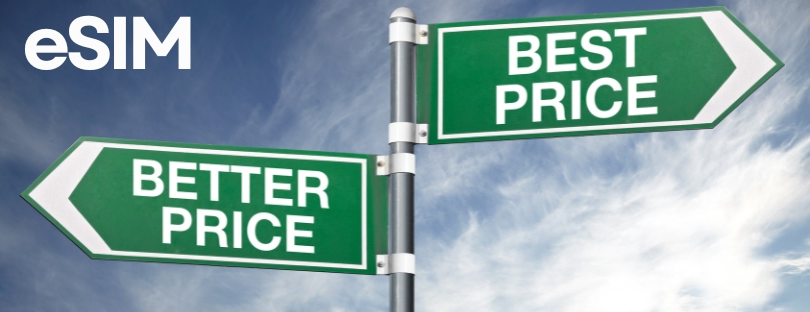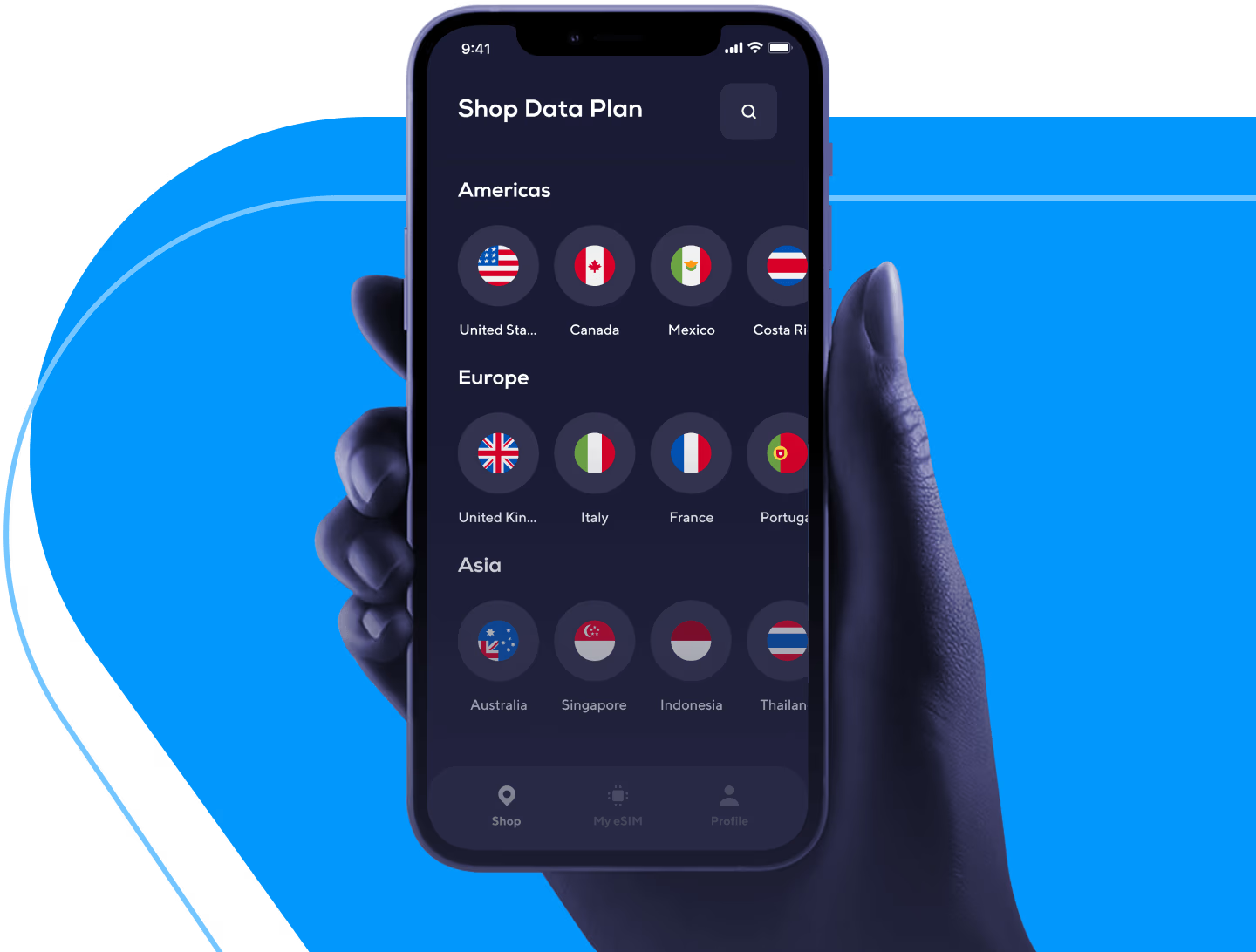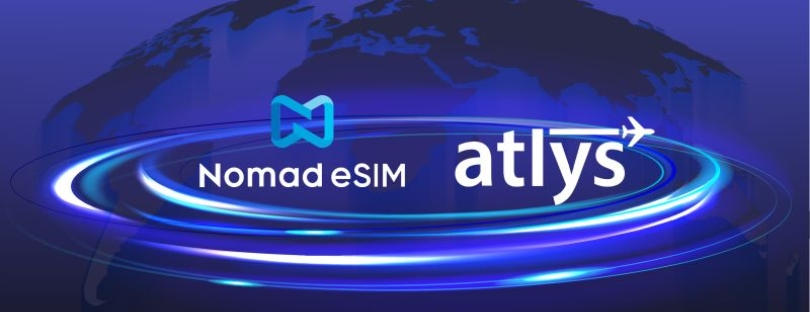
Why eSIM Prices Swing Wildly — And How to Avoid Bad Deals
If you’ve ever gone down the rabbit hole of eSIM shopping, you already know the chaos: one provider is happily selling you 1 GB for €2, another is asking €8 for the same thing… and both swear they’re giving you “the best travel data ever.” And you sit there thinking, “How is this the same gigabyte? Why does it suddenly have different personalities and a different price tag depending on who’s selling it?”
It honestly feels like walking into a supermarket and discovering that water costs €0.30 on one shelf and €2.50 on another—same bottle size, same brand, same ingredients. Except in the world of eSIMs, the label doesn’t always tell you what’s actually inside.
And that’s where most travelers get confused.
Unlike physical SIM cards, where you can at least see the brand, the packaging, and maybe even the local operator printed on it, an eSIM is invisible. You buy a QR code. You scan it. You hope for the best. And that lack of physical cues makes the price differences even more suspicious. Why would the same destination cost four times more from one provider?
It’s not because anyone is selling you “better internet molecules.”
It’s because the travel data industry is a messy mix of wholesale deals, network priorities, routing choices, regional rules, and — let’s be honest — marketing budgets that someone has to pay for.
But here’s the important part: those price differences aren’t random. They tell a story about what kind of eSIM you’re buying, whether it will perform well when you land, how fast the speeds will be, whether your hotspot works, how accurate your data counter is, and how fast support will respond when your internet decides to take a holiday.
So before you think, “I’ll just buy the €2 one,” or “Maybe the €8 one is safer,” let’s unpack the real reasons behind these price gaps. Because once you understand what you’re actually paying for — or not paying for—choosing the right eSIM becomes a lot simpler, and honestly a lot less stressful.
Ready? Let’s make sense of this madness.
First, the big truth: eSIMs are not created equal
Even though “1GB” looks the same everywhere, what’s behind that gigabyte is a completely different product depending on the provider, the network, and the underlying technical setup.
Think of it like buying bottled water.
One brand sells it for 40 cents.
Another sells it for €3.
Still water. Same size. Different everything.
With eSIMs, the gap is even bigger.
Why does 1GB sometimes cost €2?
Here are the most common reasons:
1. It’s using a reseller model (the “indirect” route)
Some eSIM brands buy data traffic in bulk from bigger wholesalers and let you use their connectivity.
Bulk = cheaper.
Cheaper for them = cheaper for you.
But because it’s an extra layer in the value chain, these plans often come with some limitations:
- Lower priority on the network
- More aggressive throttling
- Less stable performance at peak times
- Customer support that’s… slow, at best
- Sometimes, no top-ups—you must buy a new plan every time
Cheap doesn’t always mean bad.
But it usually means basic.
2. No premium features included
Low-cost 1GB plans often skip:
- Hotspot support
- Full-speed 4G/5G
- Transparent usage tracking
- Flexible validity periods
- Real human support
You’re paying for data, nothing else.
3. It’s connected to a cheaper local operator
Not all mobile networks are equal.
In many countries, one operator is far cheaper for wholesalers than another.
Example:
Operator A is the “premium” network.
Operator B is the “budget” one.
If your €2 eSIM uses Operator B, that’s part of the reason.
You may not notice the difference in some destinations, but in others—especially the Americas and parts of Asia—network choice can make or break your experience.
So why does 1 GB sometimes cost €8?
If €2 eSIMs exist, is anyone actually paying €8?
Yep—and often for good reason.
Here’s what drives the higher price:
1. Direct operator partnerships
Some eSIM providers work directly with local mobile operators instead of going through multiple wholesale layers.
Fewer middlemen = higher cost for the provider
—but—
More stable performance for the user.
Direct connections also mean:
- Better speed consistency
- Proper 5G access
- Priority on the network
- More reliable coverage indoors and in rural areas
Basically, you’re paying for quality, not just data.
2. Premium routing and network priority
Not all mobile data is equal.
Some eSIMs route your traffic through different countries or gateways before it reaches the local network.
Premium eSIMs often use:
- Local breakout (data exists locally, not via another country)
- Native IMSI profiles
- Network prioritization
This translates into better speed, lower latency, and fewer “Why is my internet dead again?” moments.
3. Better support, apps, transparency, and features
Some of the more expensive brands include:
- Real 24/7 support
- Clear data usage tracking
- Top-up options
- Longer validity
- Multi-network switching
- Instant refund policies
You aren’t just paying for 1GB.
You’re paying for the whole experience.
4. Country-specific wholesale pricing
Some countries simply cost more by default because local operators set higher wholesale rates.
For example:
- Turkey
- Certain Caribbean islands
- Some African destinations
If an eSIM is €8 for 1 GB in one of these regions, it may actually be a fair price.
So, does higher price = higher quality?
Not always.
Some brands absolutely overprice their plans simply because they can.
Others bundle extra features you may not even use.
But in general, here’s the honest rule of thumb:
- €1–€3 per GB → Budget/prepaid quality. Good for short trips, social apps, and light browsing.
- €4–€6 per GB → Good-quality standard eSIM with stable performance.
- €7–€10 per GB → Premium routing or direct operator deal. Best reliability and speeds.
If you’re traveling for work, uploading content, using maps all day, or need guaranteed stability, the more expensive options are worth considering.
The missing link explained simply: How global eSIM wholesalers work
This was the one piece the original version didn’t cover fully—because this is where the price gap really comes from.
Here’s the quick, friendly version:
Step 1: Mobile operators sell data in bulk
Local mobile operators (like Orange, AIS, Claro, Turkcell, etc.) sell huge chunks of data to wholesalers.
Sometimes directly.
Sometimes through aggregators.
Sometimes through platforms like BICS, Syniverse, or iBASIS.
Step 2: Wholesalers sell that data to eSIM providers
Some eSIM brands buy directly from Tier-1 wholesalers.
Some buy from smaller wholesalers.
Some buy from other eSIM companies that resell profiles.
The more layers there are → the cheaper the plan → but also the lower the quality.
Step 3: The brand sells it to you
By the time it gets to you, the price depends on:
- How many layers are in the supply chain
- Whether it’s using a real local profile or a roaming profile
- Whether the brand negotiated premium routing
- Which operator is behind the plan
- Whether priority access is included
- Whether the brand added customer service or cut it
Suddenly, that €2 vs. €8 difference starts making sense, right?
What actually impacts your real-world experience?
Here’s what influences what you feel when using your eSIM:
1. Network quality in the country
Some countries have amazing networks (Japan, South Korea, UAE).
Others… don’t.
Even the best eSIM can’t fix a weak network.
2. Network priority
This one is huge.
If your eSIM is “low priority,” your speed can tank at busy times:
- Stadiums
- Festivals
- Airports
- City centers
- Morning commute hours
A “premium” eSIM usually performs better.
3. Data routing
If data is routed through Europe while you’re in Asia, expect lag.
Cheap eSIMs do this often.
4. Multi-network access
The best eSIMs let your phone automatically switch between operators.
The worst ones lock you to a single network—even if it’s terrible in your location.
What should you avoid when buying an eSIM?
Here’s what you shouldn’t tolerate:
1. No transparency about the network
If a provider doesn’t tell you:
- Which local operator they use
- Whether the plan includes 4G/5G
- Whether hotspot is allowed
…that’s a red flag.
2. “Unlimited” plans with tiny fair-use limits
Unlimited is almost never unlimited.
Sometimes it’s 500MB/day hidden in the fine print.
3. Plans that only work in one operator with known issues
Especially if you’re traveling to countries like:
- Mexico
- Thailand
- Turkey
- Egypt
Where operator performance varies a lot.
4. Providers with poor or slow customer support
If something goes wrong, you need help fast—especially when traveling.
5. Providers with no refund policy
If you install the eSIM and it doesn’t connect, you shouldn’t lose your money.
So… how do you choose the right eSIM?
Here’s a simple checklist that keeps things easy:
1. Check the local operator(s)
More networks = better reliability.
2. Compare price per GB
If two plans use the same network and routing, go for the cheaper one.
3. Look for top-ups & extensions
You don’t want to buy new eSIMs every day.
4. Read reviews about speed stability
Not max speed — stability is what matters more.
5. Consider your use case
Streaming? Working remotely?
Pay a bit more.
Just messaging and maps?
Cheaper is fine.
Final thoughts: The price difference actually makes sense
The reason 1GB can cost €2 or €8 isn’t random—it reflects how complex the eSIM ecosystem is behind the scenes.
- Cheap eSIMs = basic, low-priority, reseller-based
- Expensive eSIMs = higher-quality, direct-routed, feature-rich
Both have a place.
Just choose based on what you need—not what looks cheapest at first glance.
If eSIMs are the future (and they are), then understanding these differences is how you stay connected smarter, not more expensively.













